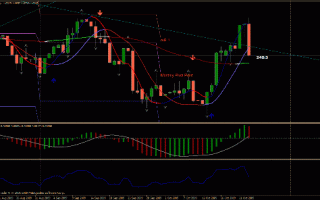This trading strategy is becoming every day more and more popular. The strategy «Break the trend» is very simple in its application to the forex market and gives easy very quite good returns. It can be used completely on all currency pairs (main and cross-rates).
The rules of this strategy Forex following:
Set the chart Metatrader 4, the following indicators:
- Removals (MovingAverages): EMA EMA 9 and 30
- Momentum (Momentum) with a horizontal line at 100.
Next, select the Hourly chart (H1). And at this hour schedule hold the trend line of Tom Demark (TD) (connecting at least 3 or more vibrational maximum or minimum).
Entering the market on the basis of forex strategy at the moving averages «Break the trend:
Purchase (long position) to implement, when the 9 EMA crosses above 30 EMA and the momentum is above 100, and the price breaks downward trend line.
Remember: The trend line is a very important filter in the forex strategy, so its Practice before you begin working on this strategy, Forex.
Warrant for entry into the market placed on the opening of a new hourly candle after the intersection (this is done in order to make sure that the intersection and the breakdown of the trend lines were indeed real).
Sell (short position) to implement, when the 9 EMA crosses down 30 ema and the momentum is below 100, and price breaks our upward trend line down.
Warning: The intersection of 2-EMA may occur after the breakdown of our trend lines.
Safety stop-loss when opening a position — 40 pips.
Profit target (take-profit) — depending on the volatility of the chosen currency pair and the foreign exchange market, but 50 — 150 points. Subsequently, the stop loss is moved in the direction of trade in increments of 5.10 points (this can take a great advisor Forex — trailing stop).
If the market allows positions to pass 75% of the daily range, the stop-loss orders do more stringent (40-50 points). At the first sign of a reversal, the position is closed at the market price. If the reversal is not observed, then keep trail open order by moving the stop-loss in the same direction.

